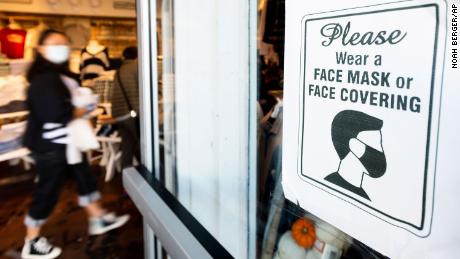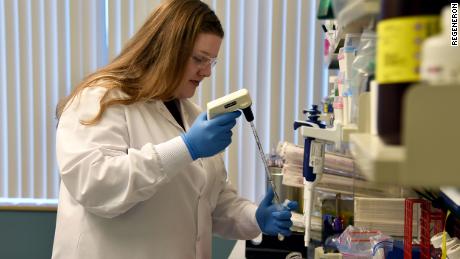US has seen staggering virus numbers, but this resurgence has been unprecedented
Saturday was the 19th day in a row that the US reported over 100,000 new cases, according to Johns Hopkins. The spring and summer peak records of new cases did not exceed 60,000.
At least 24 hospital leaders warned the American Hospital Association they are experiencing staffing shortages, Nancy Foster, the association’s vice president for quality and patient safety policy, said. Rises in hospitalization rates are often followed by climbing death tolls.
There were 24,291 deaths so far reported in the month of November. That accounts for 9.5% of deaths during the pandemic.
States report daunting milestones
The real case count is likely to be “multitudes” higher than the 12 million reported because not enough people are getting tested, said Dr. Esther Choo, professor of emergency medicine at Oregon Health & Science University.
Choo said she is particularly concerned by how quickly new cases are accelerating.
“So many states have test positivity rates above 20%, which means that we are vastly lagging behind in our confirmed cases,” she told CNN’s Erica Hill.
And test positivity is just one of the metrics reaching daunting heights across the US.
Mississippi reported a single day record in the state with 1,972 cases on Saturday, according to the Mississippi State Department of Health.
Thanksgiving travel despite CDC’s recommendation against it
The US Centers for Disease Control and Prevention last week urged against Thanksgiving travel, and against celebrating with anyone outside your own household, because cases are soaring. But health officials suspect many will visit family and friends and further spread the virus — many times, without knowing it.
Health experts, however, stress a negative test result will not guarantee a person isn’t carrying the virus to a Thanksgiving gathering, because a test won’t necessarily pick up on fresh infections. An already-infected person could test negative, travel to a dinner days later and then spread the disease.
Holding down the virus
For now, experts urge the public to use measures including wearing masks, social distancing, avoiding crowds and washing hands to curb the spread until promising vaccines and treatments are available.
A race to develop a vaccine effective against the virus has brought some promising results, with Moderna announcing earlier this month that its vaccine candidate was 94.5% effect against coronavirus.
While the application for EUA is “encouraging,” the Infectious Diseases Society of America stressed Friday that a transparent review of Pfizer’s data is still needed.
And if the vaccine is given the green light, “clinical trials and data collection must continue,” Dr. Barbara Alexander, president of IDSA, said in the statement.
“Measures that include wearing masks, frequent hand washing, maintaining physical distance and restricting the size of gatherings will remain crucial,” the statement said. “Finally, new federal funding must be provided for widespread, fair and equitable vaccine distribution in addition to campaigns to build vaccine confidence.”
CNN’s Christina Maxouris, Hollie Silverman, Holly Yan, Claudia Dominguez, Jamie Gumbrecht, Jacqueline Howard and Lauren Mascarenhas contributed to this report.
![]()





